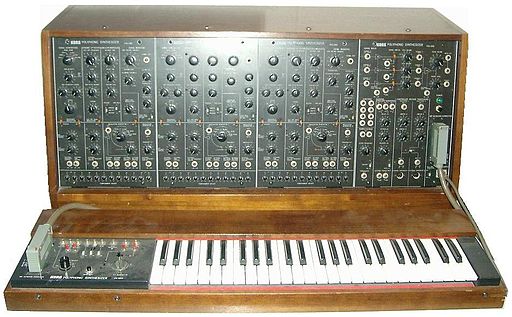An October 20 article in The New Yorker announced that the photographer William Eggleston has released his début album, “Musik,” a collection of untitled, improvised symphonic pieces.

Eggleston has spent his whole life making photographs, and always using traditional film rather than a digital camera. It makes his debut album particularly interesting, because the pieces were created and performed using a Korg Synthesizer.
The juxtaposition of making photographs using traditional film versus creating music on a Korg Synthesizer made us also think of the modern vs. traditional contrasts expressed by our November featured composer, Camille Saint-Saëns. While Saint-Saëns was very much connected with modern music of his time, he believed in and subscribed to using conventional musical structures worked out by earlier French composers.
Our technical manager, Eric, has a degree in electronic music. Our business manager Nora asked him a few questions about his thoughts regarding classical music being expressed through digital and electronic instruments.
Nora: What makes the Korg Synthesizer unique compared to other synthesizers, such as the Moog Synthesizer?
Eric: The way that the Korg produces its rich, analog sounds is different than how Moog produces them. The Korg design is more of an all-in-one. Moog’s approach is comprised of discrete modules that can be linked or patched together to create a complete instrument.
Nora: While I view synthesizers as a modern instrument, they’ve actually been around for a while, correct?
Eric: Correct. Synthesizers really became mainstream with the release of Switched-On Bach in 1968. As a matter of fact, that album inspired me to pursue the study of electronic music.
There were actually synthesizers before the 19th century, such as the Wolfgang von Kempelen Speaking Machine circa 1769-1791 and Koenig’s sound synthesizer in 1865.
Nora: More and more, people are inventing new methods of making music using electronic tools. Check out DigiEnsemble Berlin featuring Tobias Berndt performing Großer Herr und starker König, as set by Johann Sebastian Bach. (IPA text downloadable here: https://www.ipasource.com/grosser-herr-und-starker-konig.html) What do you think?
Eric: I find it innovative, creative, and provocative. Some people don’t subscribe to electronic instruments’ ability to accurately reproduce the sounds of traditional instruments. However, I view them as an exciting, creative variation over traditional instrumentation.
Nora: Looking at DigiEnsemble Berlin’s performance above, I see what appear to be a number of iOS devices (iPad, iPhone) making the music. Are synthesizers like the Korg and Moog being replaced by apps?
Eric: The software implementation of traditional synthesizers is helping to continue the adoption and use of these great devices, i.e. Moog Model 15 for iOS or Geo Synth for iOS – both applications that can be downloaded. Geo Synth was heavily used by DigiEnsemble Berlin in the above performance.
There is plenty of room in the sandbox for the performance of classical and contemporary music using traditional instruments (wooden, brass, etc.), electronic instruments (such as the Korg or Moog Synthesizer) and software instruments (such as Geo Synth or Moog Model 15 for iOS, to name just two of the many available for download).
